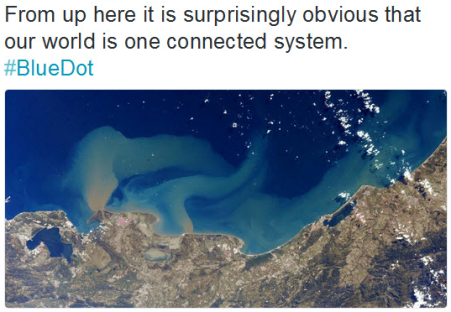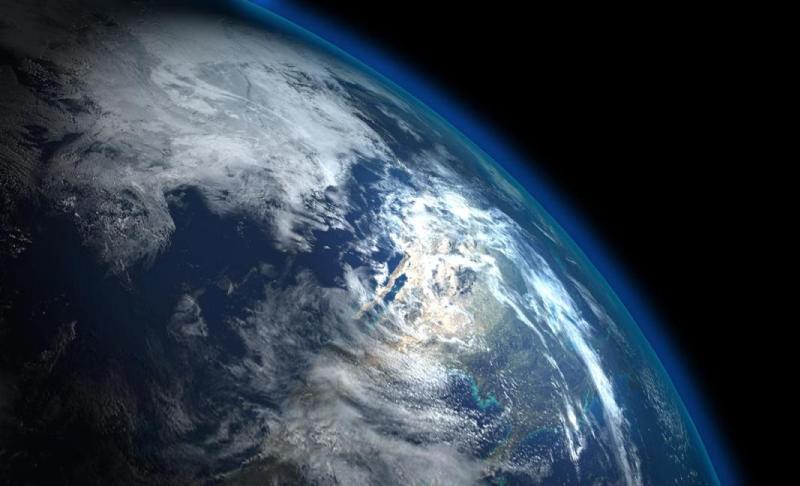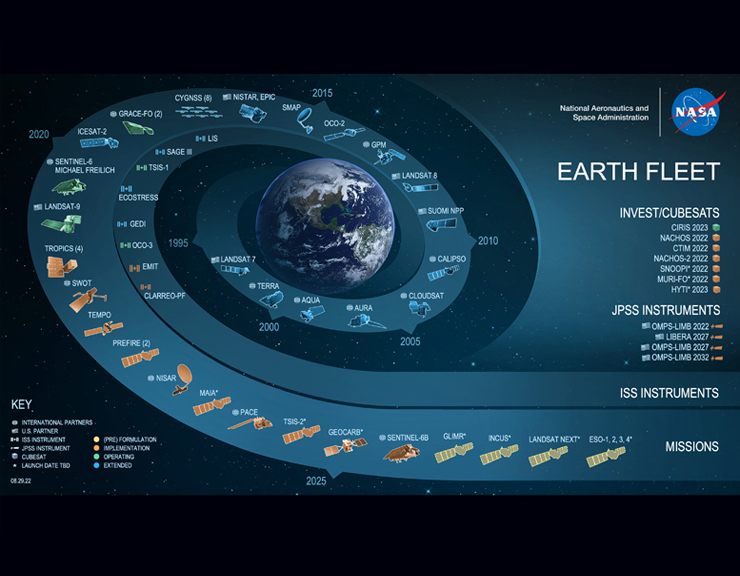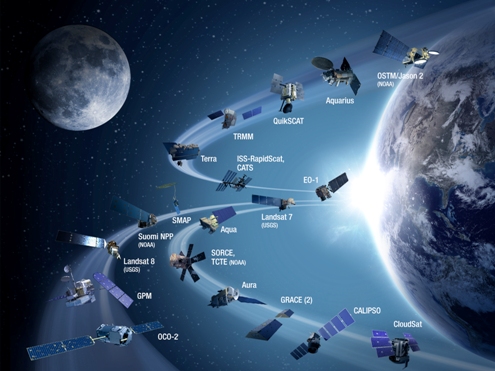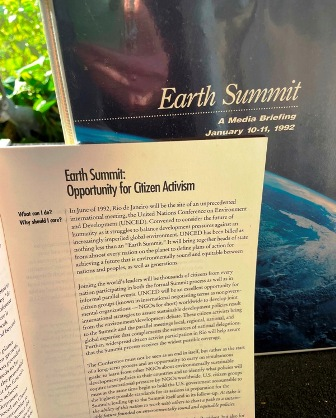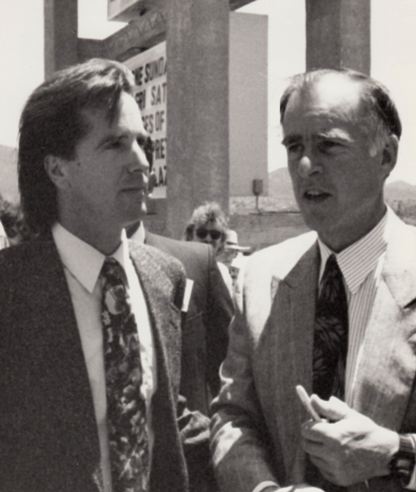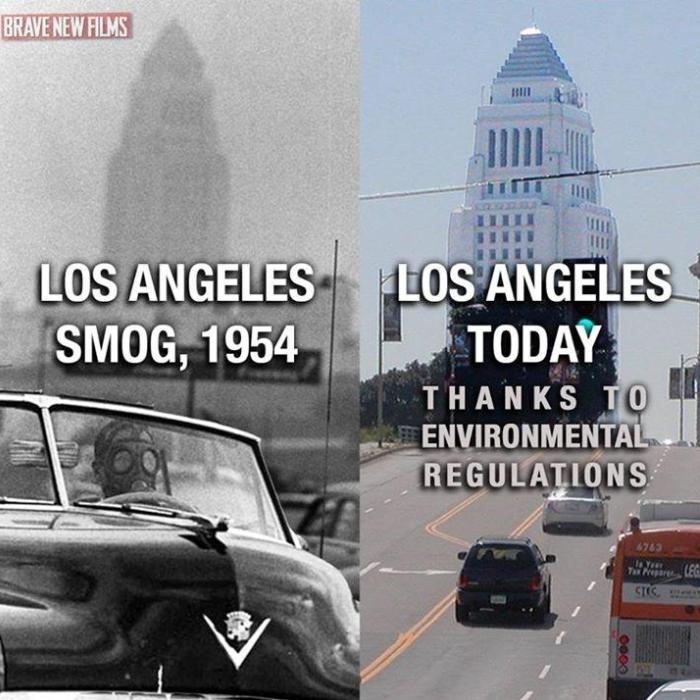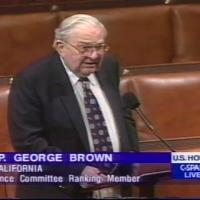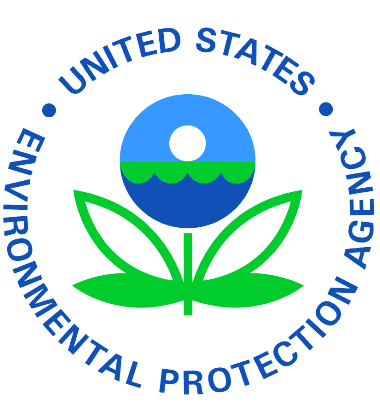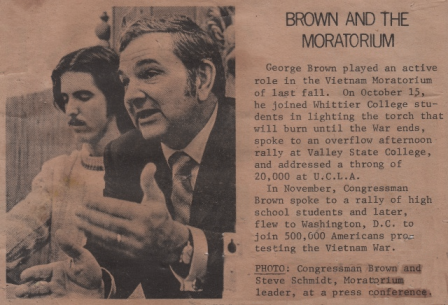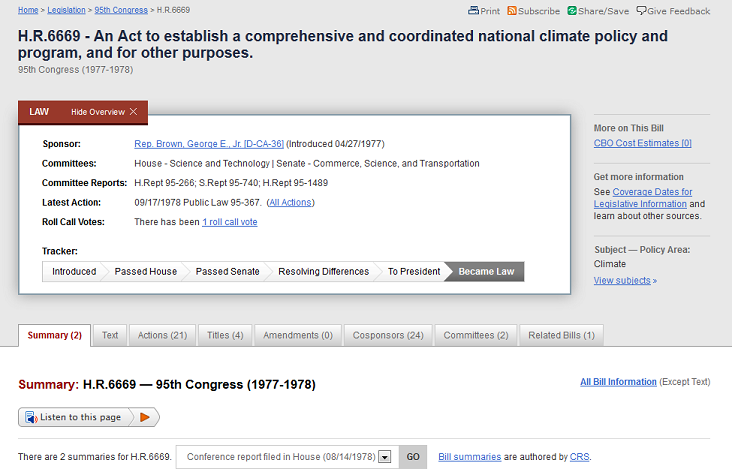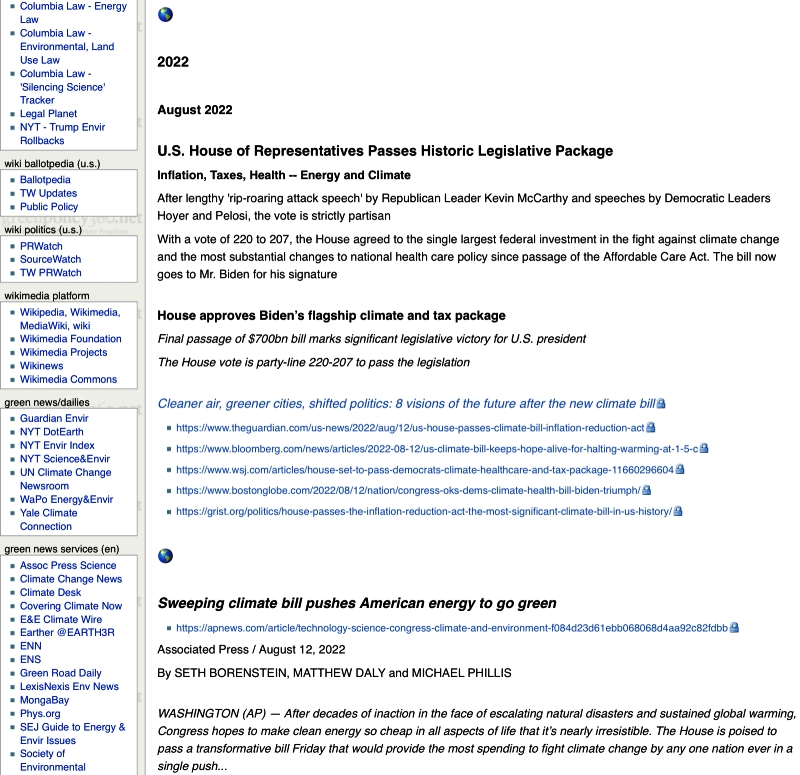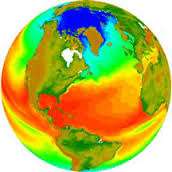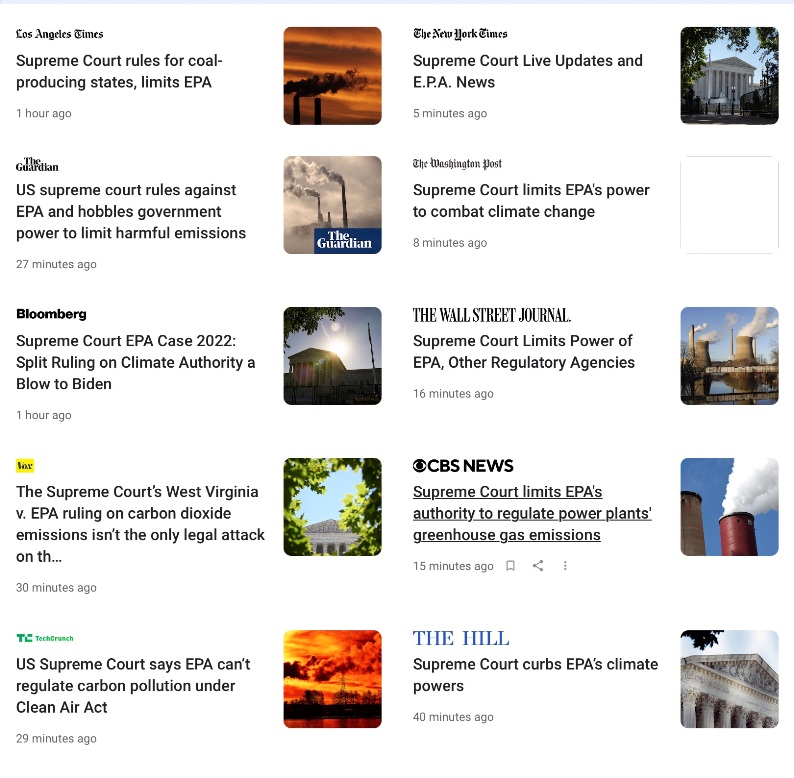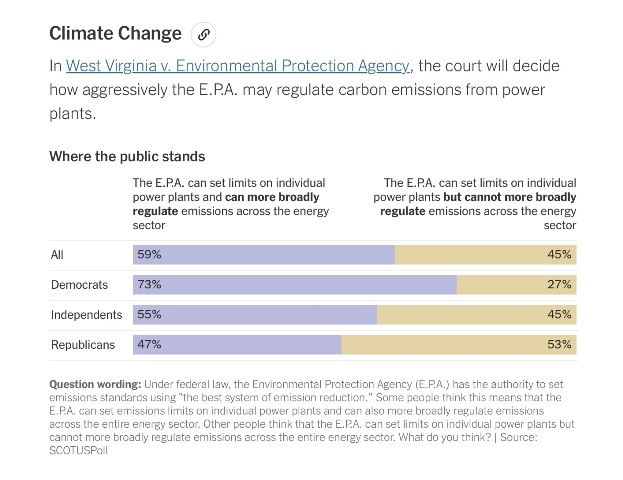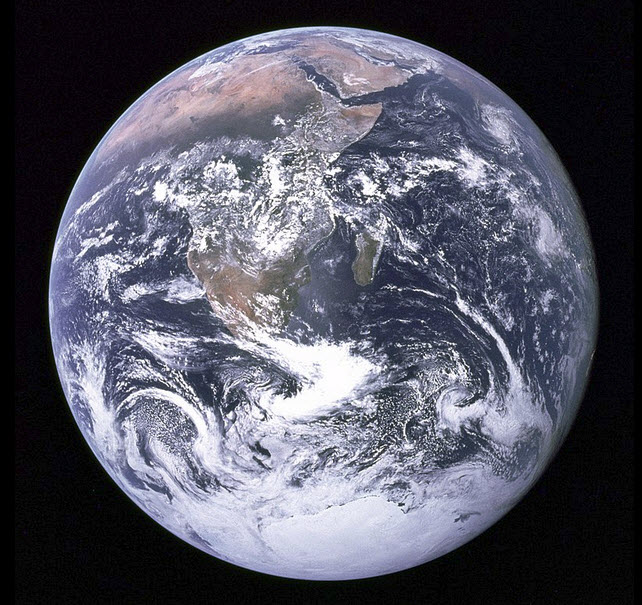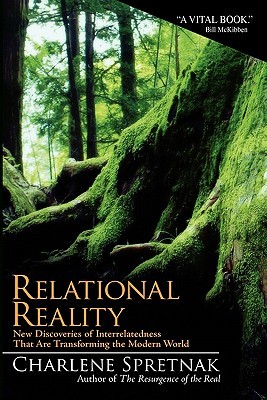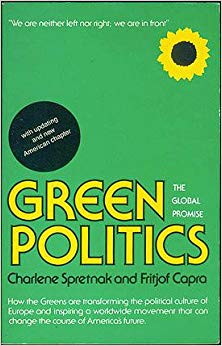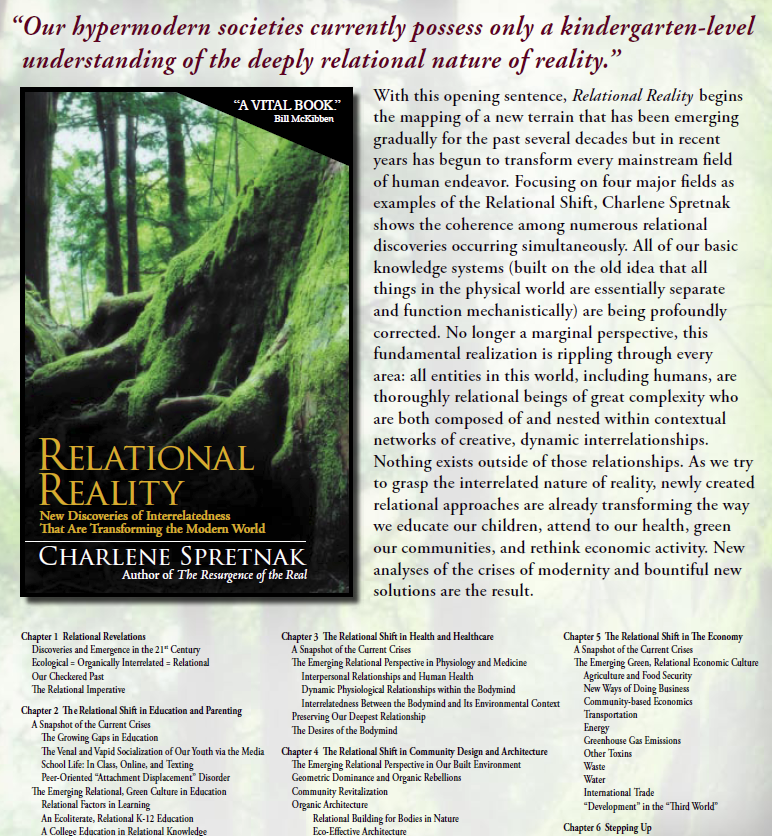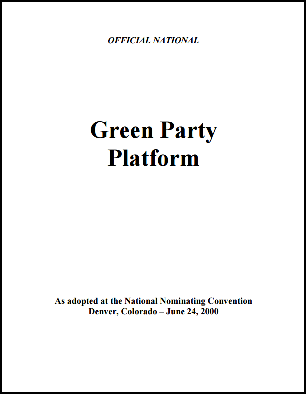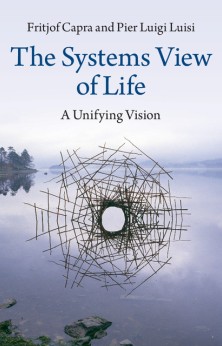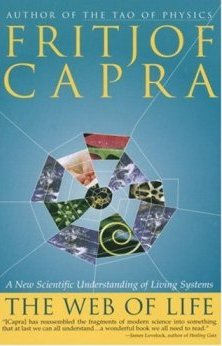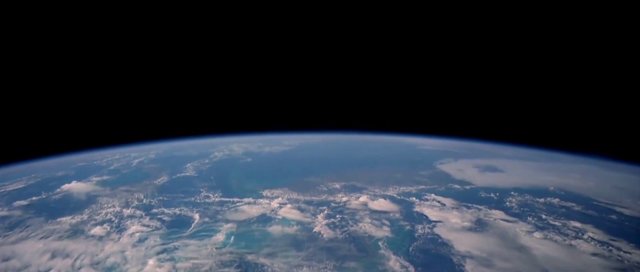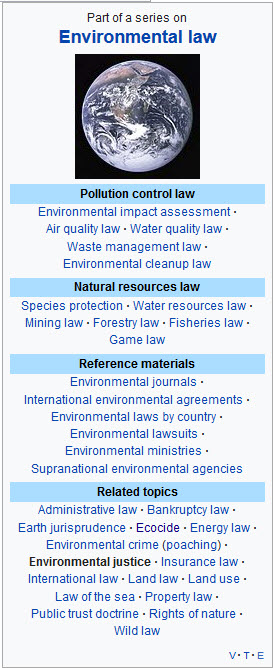Environmental protection
Environmental Law, Advances & Setbacks
GreenPolicy360's Campaign to 'Turn National Climate Promises & Pledges into Reality' (2021)
- Our Climate Plans Enforcement Initiative continues as the next Global Climate Conference approaches, November's Conference of the Parties (COP27)
- Drawing from the database of Earth Science resulting from decades of space-based missions designed to provide us with actionable 'Earth-system and Climate-related data'
- Measuring & Monitoring to Manage Earth's Living, Dynamic and Changing Systems, Local, National and Global
Methods to Enforce Climate Plan Pledges
GreenPolicy360: Climate Plans Enforcement Initiative
Pressuring Nations to Step Up, Cooperate, and Act Now
Environmental Laws, Regs, Rules... Lawsuits & Legal Actions
Glasgow (2021) & Paris (2015) Summits: Int'l Climate Plan Pledges & Promises (INDCs-NDCs)
"Earth Observing System (EOS)": Decades of Earth Science/Climate Science Data Accessible for Planet Citizen Action
🌎
Planet Citizens, Planet Scientists
* https://www.greenpolicy360.net/w/File:Above.png
🌎
2023
GreenPolicy360 Siterunner: Reflecting back 30 years to when Congressman George E. Brown was assisting me in my work on delivering news of the first "Earth Summit", the beginning of the UNFCCC international climate 'conferences of parties', and on a parallel front I/we were directly involved in the drafting of the presidential platform of Governor Jerry Brown.
Environmental protection was, as the saying goes, "top of mind" in 1992!
○
1992 Presidential Campaign
Governor Edmund (Jerry) Brown Brings Forward a Diverse Eco-nomic/Environmental Platform
SJS / Advancing a presidential campaign, your GreenPolicy360 siterunner worked with the Governor to draft the 'we the people' campaign platform, taking new ideas into the U.S. presidential debate to press the Democratic Party into a progressive direction...
- At the Democratic Party Platform Hearings
🌎
2022
Challenge: To Preserve and Protect Life on Planet Earth
Planet Citizen Vision of Living Earth
The Living Planet Index (LPI)
Tracking the health of nature over 50 years
The Living Planet Index (LPI)—which tracks populations of mammals, birds, fish, reptiles, and amphibians—reveals an average 69% decrease in monitored wildlife populations since 1970. The 2022 LPI analyzed almost 32,000 species populations. It provides the most comprehensive measure of how they are responding to pressures in their environment.
Living Planet Report 2022
Via the World Wildlife Fund (WWF)
Wildlife populations plummet by 69%
The Living Planet Report 2022 is a comprehensive study of trends in global biodiversity and the health of the planet. This flagship WWF publication reveals an average decline of 69% in species populations since 1970. While conservation efforts are helping, urgent action is required if we are to reverse nature loss.
Interlinked emergencies: Climate change and biodiversity loss
The evidence is unequivocal—we are living through the dual crises of biodiversity loss and climate change driven by the unsustainable use of our planet’s resources. Scientists are clear: unless we stop treating these emergencies as two separate issues neither problem will be addressed effectively.
Our broken relationship with nature
Climate change and biodiversity loss are not only environmental issues, but economic, development, security, social, moral, and ethical issues too. Industrialized countries are responsible for most environmental degradation but it is developing nations that are disproportionately impacted by biodiversity loss. We all have a role to play in building a nature-positive society that safeguards the planet for the good health of everyone.
🌎
California out in front in a Green future
August 26, 2022
California Acts to Ban the Sale of New Gasoline Cars
The decision, to take effect by 2035, will very likely speed a wider transition to electric vehicles because many other states follow California’s standards
After the California Air Resources Board approved Thursday regulations that ban the sale of new gas-engine vehicles by 2035, requiring all new cars to run on electricity or hydrogen, California Gov. Gavin Newsom told ABC News he was confident that more states would do the same to help combat climate change.
BY THE TIMES EDITORIAL BOARD | AUG. 26, 2022
It’s hard to overstate the significance of California’s move this week to end the sale of new gas-powered cars.
The California Air Resources Board’s vote Thursday setting a firm 2035 deadline is huge and consequential for climate change, air quality and health. The nation’s most populated and worst-polluted state is the first to adopt rules that will finally stop adding gas-fueled passenger vehicles to its roads.
The end of the internal combustion engine era, and the toll on our lungs and our planet, is finally on the horizon.
This regulation will require automakers to sell increasing percentages of zero-emission and plug-in hybrid vehicles starting with 35% of new car sales in 2026, reaching 68% in 2030 and 100% by 2035. Zero-emission vehicles account for 16.5% of California’s new sales today, a rate that leads the nation but lags behind Europe and China. So these rules help reestablish California’s climate leadership, putting it in step with other leading nations and making it one of the first — and the largest — vehicle markets in the world to require 100% of new sales be zero emissions.
It’s a pivotal moment for a state that has been shaped for decades, often negatively, by automobiles and the health-damaging pollution they generate.
More on California's decision to drive forward into a new world of transportation
- ~
○
GreenPolicy360 Siterunner / Steven Schmidt: In the 1950s and 1960s, when your GreenPolicy editor was a young person growing up in Los Angeles, California, the people in L.A. breathed some of the dirtiest air in the world.
Los Angeles still has 'smog' now, but it’s not nearly as bad as it used to be. How did the city get its act together?
It took decades. California was out in front in the U.S. and world in air quality regulations but it wasn’t until 1975 that the U.S. required new cars to have catalytic converters, “the key piece of technology that allowed everything to change,” according to Mary Nichols, chairman of California’s Air Resources Board. In between, there were frustrating years of scientific research, industry denial, politics, protest and an unwavering attachment to the automobile.
○
August 2022
Out in Front: Go California Go
California Acts to Ban the Sale of New Gasoline Cars
The decision, to take effect by 2035, will very likely speed a wider transition to electric vehicles because many other states follow California’s standards
After the California Air Resources Board approved Thursday regulations that ban the sale of new gas-engine vehicles by 2035, requiring all new cars to run on electricity or hydrogen, California Gov. Gavin Newsom told ABC News he was confident that more states would do the same to help combat climate change.
BY THE TIMES EDITORIAL BOARD | AUG. 26, 2022
It’s hard to overstate the significance of California’s move this week to end the sale of new gas-powered cars.
The California Air Resources Board’s vote Thursday setting a firm 2035 deadline is huge and consequential for climate change, air quality and health. The nation’s most populated and worst-polluted state is the first to adopt rules that will finally stop adding gas-fueled passenger vehicles to its roads.
The end of the internal combustion engine era, and the toll on our lungs and our planet, is finally on the horizon.
This regulation will require automakers to sell increasing percentages of zero-emission and plug-in hybrid vehicles starting with 35% of new car sales in 2026, reaching 68% in 2030 and 100% by 2035. Zero-emission vehicles account for 16.5% of California’s new sales today, a rate that leads the nation but lags behind Europe and China. So these rules help reestablish California’s climate leadership, putting it in step with other leading nations and making it one of the first — and the largest — vehicle markets in the world to require 100% of new sales be zero emissions.
It’s a pivotal moment for a state that has been shaped for decades, often negatively, by automobiles and the health-damaging pollution they generate.
More on California's decision to drive forward into a new world of transportation
- ~
○
Memories by GreenPolicy360's founder of Rep. George E. Brown, a first mover in California then in the US Congress for three decades pushing for environmental protection, health, and science going forward -- the creation of the EPA, the Clean Air Act, the first generation and foundation of environmental laws that are a generational contribution.
My Friend George
In his rumpled suits and quiet way George E. Brown moved to form coalitions few thought could be formed and garnered support for the first set of U.S. Congressional acts that served as foundation legislation for decades of green progress.
The First Earth Day: Personal Memories by Steven Schmidt of George's Role
Congressman Brown's work advanced environmental air quality and clean air legislation. He introduced the nation's first bill to ban lead in gasoline and was at the forefront of the Clean Air Act. He attacked Los Angeles smog, some of the worst air quality of any city in the world at the time and the air standards that came out of California became models worldwide. He succeeded in clean air and water efforts, though rarely given credit given his quiet approach to accomplishing big picture goals.
George was a key player in legislation founding the Environmental Protection Agency.
As the LA Times noted (without pomp or circumstance) in George's obituary in 1999: "He championed the creation of the federal Environmental Protection Agency". The creation of the EPA was in many ways Congressman George Brown's vision achieved..."
George worked tirelessly in Congress for change. With saving and protecting the environment in his sight, he moved conservative and liberal politicians in his direction. George saw connections that transcended states and nations. A key goal was setting up an EPA as an umbrella agency to coordinate environmental federal and federal-state efforts...
George was a "first-mover" as the term has come to be known. He had a big-picture plan and set out to accomplish it. He succeeded on multiple fronts, pushing forward the idea and the vision for 'omnibus' legislation. The Environmental Protection Agency was founded and historic initial green laws and regulations for environmental protection and security were passed.
The founding of the EPA was based on new realizations of science and the environment. The vision of the "Whole Earth" that began with unprecedented Apollo photos on the cover of Life magazine in January 1969 led to a coming together of education, students 'teach-ins', scientific space missions studying earth systems for the first time, and popular demands for environmental protections.
A leader and a chairperson on the House science committee for over 30 years, George legislatively engineered an array of science efforts, including one that greens look to as prescient -- climate science.
From California to the World
GreenPolicy360 Siterunner: In the early years of the modern environmental movement, a conscious effort was made to construct a foundation of environmental laws and regulations on which a multi-year environmental protection framework could be built. Your GreenPolicy360 founder was one of those who believed in this constructive paradigm, using model legislation that could be locally developed, often in our state of California, then shared, 'exported' as we used to say, 'to the Feds' for adoption at the national level. The history here provides an ongoing modus operandi from the 60s and 70s until now as we deal with the pressing local, national, and international/global environmental threats and crises. We, at GreenPolicy360, call this "green best practices". Best practices is a model for sharing, networking, building on success and action. Templates and models, best practices made openly available, are our plans for having multiplier effects -- and it is our ongoing mission. A strong and resilient legal foundation and framework of environmental laws is an essential part of our overall work. We encourage you to join in as citizens of every nation, within your multiple and diverse legal systems and, we must add, as planet citizens.
🌎
Reflecting on the Life of George E. Brown
SJS / GreenPolicy Siterunner: George was the man who convinced me to look at politics as a serious calling. When I was a young teenager in East LA, looking out at a larger world in which I had yet to travel, and debating nuclear proliferation, the debate topic of the year as high schools were considering why sirens were on occasion loudly going off and forcing us to crawl under our desks, the man I got to know in Monterey Park was at the beginning of his career in politics and science.
For the next 35 years he was my mentor and an inspiration of what can be done to make a difference and create a better world. George was a visionary with tousled hair, a professorial look, a smelly pipe and a twinkle in his eye. He was always there for his constituents, like me, an East LA kid who grew up to be a friend and cohort as we did green work over the years.
George was a real presence in Congress, in science and environmental achievements, from the first Earth Day to the first federal program to study climate science, from the first earth science research from space to 'big science' projects that carry on to this day.
Back in the early days, we would speak of these political efforts, and especially the immediate reality of the 'smog' in LA, which might have been at that time the worst in the world, and how we needed to clean up the air. I spoke of my asthma with George and his engineering background provided his perspective with advantages over the run-of-the-mill politicians in DC in knowing how to best address the pollution from cars, the gas engines that were becoming ubiquitous in fast-growing suburban Southern California.
When your GreenPolicy360 siterunner was in college at USC in the late 1960s and becoming deeply involved in politics, George and I continued to speak of the children in Los Angeles and their lung problems and scientific and medical studies that were vividly (shockingly) demonstrating the consequences of growing up in the most polluted air in the country.
George helped my organizing work and I helped his especially in the "decade of the environment" following the first Earth Day in 1970 and the building of a foundation of environmental legislation.
As George became a leader in Congress and ran for U.S. Senate, opposing the Vietnam war and I helped organize in DC what became the largest anti-war group, the Vietnam Moratorium Committee, we spoke of war and peace and how to change the nation's war policies and role in the world. His efforts to change U.S. foreign policy led to the first Earth Day.
- George Brown and Steve Schmidt, 1969
-
George was among the first voices to be raised warning about the environmental threat of climate disruption and, although few realize, he was at the forefront of the initial efforts to study the climate, pushing the development of initial atmospheric science programs and missions of NASA and public/private research. He combined his engineering skills with his legislative reach.
George E. Brown, in fact, drafted the "National Climate Program Act" of 1978.
1978 Climate Act PDF via GreenPolicy360
Rep. George Brown brought his extensive work with U.S. top scientists, featured in the work of 1977's Energy and Climate Report of the National Academy of Sciences and follow on 1979 Academy Climate Science report that was presciently accurate in its predictions.
The Congressman-Engineer emphasized, constantly to me and in his work, the essential important of having accurate data in order to make the best possible engineering decisions. He imprinted, if I could use this word to its fullest meaning, the vital nature of gathering information with studies over time to monitor changes. He was in a position, one of the most powerful positions in government, to shape the policies of science -- atmospheric science, earth science, big science.
🌎
Here's to George Brown and the many visionaries, thinkers and doers who have carried on preserving and protecting our home planet.
California out in front in a Green future
Today many of the actions of George Brown continue as models for citizens, cities and nations of the world. California and a green political/environmental protection movement that George helped to begin continue to be out in front with ideas to improve quality of life.
In our GreenPolicy360 work, George's work continues. Even as political opposition to environmental work, anti-nuclear work, anti-war work is at risk, as we look out at a strategic horizon with pressing demands, the foundations put in place by an earlier generation remain strong.
Planet Citizens | Planet Citizens, Planet Scientists
George Brown's work remains with us in his legacy of accomplishment. I miss him often but know he is still around. I feel him when I write of green ideas and look to our kids and education and our shared future...
At the Beginning of U.S. Science on Global Warming, Strategies & Planning
1978, the First Climate Actions
In 1979 came the first follow-on National Science Academy report. This study and report of national scientists was prescient and accurate in its global warming predictions.
First National Climate Act, Historic Work, 1978
GreenPolicy360 Siterunner / SJS: The beginnings of modern environmental and climate science can be traced to the 1960s and 1970s. The U.S. National Academy of Sciences played a key role in laying a foundation of scientific reports and data.
Energy and Climate Report, 1977, National Academy of Sciences / 175 pp. / PDF via GreenPolicy360
Rep. George Brown took the findings of the 1977 Energy and Climate Report from the Academy of Sciences and made the science actionable. In a historic moment, he proposed and drafted the legislation of the first U.S. National Climate Program and shepherded its passage in 1978.
This first federal program established to study and assess scientifically the issues and risks of human-caused climate change became a foundation for comprehensive initiatives, with an array of new Earth Science missions led by NASA and NOAA, the EPA and USGS.
🌎
August 19, 2022
WASHINGTON / Via the NY Times and Online News Services — Fresh off signing expansive climate legislation, President Biden and his administration are planning a series of executive actions to further reduce greenhouse gas emissions and help keep the planet from warming to dangerous temperatures, senior White House officials said.
Mr. Biden is on track to deploy a series of measures, including new regulations on emissions from vehicle tailpipes, power plants and oil and gas wells, the officials said.
After Signing Climate Bill, Biden Prepares More Actions to Cut Emissions
Regulations from the E.P.A. and elsewhere will help the president meet his aggressive climate goals
The Green Climate Package continues to grow with Executive Orders and Agency Actions
Speed & Scope Is Up: Green Transition / Climate Action on the Move
🌎
West Virginia Senator Manchin comes around and 'makes a deal'
Last efforts to reach a compromise produce a new deal with a new name
House approves Biden’s flagship climate and tax package
Final passage of $700bn bill marks significant legislative victory for U.S. president
The House vote is party-line 220-207 to pass the legislation
Cleaner air, greener cities, shifted politics: 8 visions of the future after the new climate bill
The Inflation Reduction Act, which just passed through the House after approval by the Senate last week, is a climate investment with no parallel in US history. The spending package of $374 billion, expected to be signed into law by President Joe Biden, is aimed at turbocharging the largest economy’s belated shift to clean energy. It also has controversial sweeteners for the oil and gas industries...
Here are eight mostly hopeful visions of the (near) future from climate watchers, tech investors and activists.
Improved air quality starts at home
Healthier neighborhoods delivered by (electric) trucks
More transparent supply chains
Cities that reach 100% electrification
Slower-rising seas…
…and continued rising temperatures
An entrenched green economy
Next-generation climate politics
🌎
A Green New Deal by Another Name
- Three Legislative Actions Add Up to a New Version of a Green New Deal
- Infrastructure, CHIPS, IRA...
GreenPoliyc360: Let's look more closely at three huge advances as the US acts to deal with climate...
A Renamed and Restructured Green New Deal
🌎
West Virginia and Its Senator lags in environmental protection
File:SCOTUS News re West Virginia v EPA Decision.pdf
West Virginia v EPA
- Click Here for a scan of news/commentary and opinion re the June 30, 2022 decision
June 2022 l Update
🌎
GreenPolicy360 Siterunner:
Witness to an Environmental Movement, 1960s to the 2020s, a Generational Challenge
First came discovery, purposefully gathering the facts and data of environmental disruption, earth and atmospheric science, biodiversity and loss of habitat, loss of life, global warming and climate change;
Followed by decades of green activism making the case for environmental protection/environmental security, advancing new definitions of national and global security using the data now attesting to the scope of the problem, the immediacy of the threat, and challenge of overcoming deniers, naysayers and obstructionists;
Now we can see clearly, from the first international environmental protection gathering and resulting plan, the Stockholm Declaration of 1972 until today, with some 200 individual national (intended and determined) climate/environmental plans put forward after the Paris (2015) and Glasgow international summits (2021), that the clock is running behind. The times call for "Climate Plans Enforcement".
Climate Plans Enforcement - Resources
From Then until Now... and What Happens Next
In the early years of the modern environmental movement, a conscious effort was made to construct a foundation of environmental laws and regulations on which a multi-year environmental protection framework could be built. Your GreenPolicy360 founder was one of those who believed in this constructive paradigm, using model legislation that could be locally developed, often in our state of California, then shared, 'exported' as we used to say, 'to the Feds' for adoption at the national level. The history here provides an ongoing modus operandi from the 60s and 70s until now as we deal with the pressing local, national, and international/global environmental threats and crises. We, at GreenPolicy360, call this "green best practices". Best practices is a model for sharing, networking, building on success and action. Templates and models, best practices made openly available, are our plans for having multiplier effects -- and it is our ongoing mission. A strong and resilient legal foundation and framework of environmental laws is an essential part of our overall work. We encourage you to join in as citizens of every nation, within your multiple and diverse legal systems and, we must add, as planet citizens. It is time for concerted planet citizen action.
🌎
Climate Change Laws & Lawsuits
🌎
Climate-Related Laws/Statutes, Ordinances, Regulations, Rules | Law Making & Rules Making
🌎
"Our loyalties are to the species and the planet. We speak for Earth...
- Our obligation to survive is owed not just to ourselves but also to that Cosmos, ancient and vast, from which we spring."
- -- Carl Sagan, Cosmos
Planet Citizens | Planet Citizens, Planet Scientists
GreenPolicy360: Watch & listen to Carl Sagan's 1992 tour de force climate speech
* https://www.youtube.com/watch?v=9Xz3ZjOSMRU
○ ○ ○ ○ ○ ○ ○ ○ ○ ○ ○ ○ ○ ○ ○ ○ ○ ○ ○ ○ ○ ○ ○ ○
Noel Preston: On my study wall there hangs a beautiful photograph taken by the crew of Apollo 17 during their space journey to the moon. It shows Earth our home, the blue planet set against the inky blackness of space. Earth appears as a ball-like, single organism.
We are a privileged generation to have this image and, associated with it, an understanding of the cosmos in its magnificence.
But we are also the generation that is responsible for unprecedented damage to Earth‟s life systems – a system that has been almost five billion years in the making. In our time, the collision between our human story and the Universe story demands some accounting and reconciliation, as well as a revision of the narratives by which we live.
* https://www.greenpolicy360.net/w/Environmental_movement
Environmental Protection, Environmental Security
- Interconnected, Intergenerational...
🌎 Beginnings of the Modern Environmental Movement
"It's All Related"
~ Eco-Politics, Relational Reality
"Relational Reality"
○
A Green Philosophy, Green 'Key Values'
Charlene Spretnak -- Spiritual Dimension of Green Politics
Fritjof Capra -- Is There Room for Spirit in Science? & Charlene Spretnak -- The Spiritual Dimension of Green Politics / Relational Reality
Green Politics
by Charlene Spretnak & Fritjof Capra
Relational Reality, Green Values & the Green Platform
- SJS / Siterunner: It's all connected, it's all related.
"It's All Connected"
SJS/GreenPolicy Siterunner: In the early, formative years of the Bioneers, our group of 'bio pioneers' looked to nature's lessons as guides for knowledge and action. We often talked about how "It's all connected, it's all related" as we went about our organizing work, writing, and publishing. Today, Bioneers continues in its third decade. The message continues on, learning from nature, sharing lessons, an integral ecology and wisdom that is deep and needed in our time.
In the 1990s your GreenPolicy360 siterunner brought these ideas of interconnectedness into the drafting of the US Green Party platform, and Global Green Charter. I began my green writing with an understanding of building on a strong and lasting foundation. This was a values foundation and a core set of green values, that grew to become the new platform's Green Key Values (KVs).
I was fortunate, having moved from Los Angeles in 1987, to Santa Fe, New Mexico to be introduced to the work of Charlene Spretnak and her Santa Fe publisher at the time, Bear & Company.
Charlene's work to bring forward the original Green Key Values was inspirational to me.
Beginning in the 1990s in Santa Fe, I set to work on developing a "serious, credible, platform-based" U.S. Green Party. Our green politics group explored the initial Green Party roots and work of Charlene Spretnak, including the "key values" statement that was a foundation from the 1980s for the Green Party. Charlene and the women who pulled together a values foundation for the policy and positions to be developed became my own starting point in proposing, then drafting the founding Green Party platform.
Connectivity, as we were exploring in Santa Fe with the Bioneers, the Santa Fe Institute, St John's "Great Books" program, joined up with an political strategy that I carried over from the Brown presidential campaign of 1992. A whole earth perspective and an 'eco-nomics' were far along ib our thoughts. These core values, ideas and positions brought together a "tapestry of threads".
We proposed a national Green meeting a plan that I presented for a "40 state organizing effort". The strategy was adopted, including a proposal for a new platform, a presidential campaign, a first nominating convention (in Los Angeles, the "city of angels".) High hopes were floated and incorporating extensively from the works I drew from History of Ideas study at the Graduate Faculty of the New School in NYC, became a basis for the Green platform. Tying ideas together was a Whole Earth philosophy, one of seeing a big picture, and relationships that draw us together as 'planet citizens'. Connectivity based on values, a "relational reality" became a key element as I drafted an initial platform from 1995 to 2000. The comprehensive Green platform was adopted in 2000, on the cusp of a new century and millennium, as the US Green Party was formed and in 2001 formally approved as a "national committee of a national party" by the US Federal Election Committee.
Green concepts of living systems, 'it's all related' connectedness, go far beyond Green parties. A green perspective is vital and vitally needed, a new vision for the 21st century, of common bonds, protecting and preserving life, valuing the use of science and physics and acknowledging the challenges we all face in our Anthropocene era. Planet Earth is literally "in human hands".
Earth system science and relational reality, in a values vision of inter-connectedness and "the Commons", continue at the heart of our green politics and global green work.
'It's all connected' is green politics, a web of life, relational reality in our world.
○ ○ ○ ○ ○ ○ ○ ○ ○ ○ ○ ○ ○ ○ ○ ○ ○ ○ ○ ○ ○ ○ ○ ○ ○ ○
Ecocentric, not Egocentric:
We are an 'integral within', not 'on top of' nature
• http://www.greenpolicy360.net/mw/images/Green_Key_Values_Spiritual_Dimensions-Spretnak-1.pdf
• http://www.greenpolicy360.net/mw/images/Green_Key_Values_Spiritual_Dimensions-Spretnak-2.pdf
• http://www.greenpolicy360.net/mw/images/Green_Key_Values_Spiritual_Dimensions-Spretnak-3.pdf
Green Values: A Green Platform Foundation
The Ten Key Values of the Green Party of the US: The 'KVs' of the Founding Platform
The U.S. Green Party "Ten Key Values"
The Ten Key Values of the Green Party of the US are often referred to as "the KVs" and act as a values foundation for the policy platform of the Green Party.
The Key Values were approved in 2000 at the national party convention in Denver, CO along with the founding national Green political platform.
○ ○ ○ ○ ○ ○ ○ ○ ○ ○ ○ ○ ○ ○ ○ ○ ○ ○
Steven Schmidt - GreenPolicy Siterunner:
Writing to Charlene Spretnak in the Green Horizon Magazine, Fall - 2013
As the person who held a serious responsibility in redrafting the Key Values statement and changing the question format that came out of the 1984 Green meeting, I can say (and have said in numerous speeches, talks, articles and posts) that the Key Values are the values foundation on which we constructed our founding national Green Party Platform.... I often have explained our Green Key Values underpinning in speeches and in my writing over the years. The values of the Greens are a beginning point, an appropriate and a deeply held core set of beliefs that suffuse our platform... I was careful as I drafted platform language during these initial years and engaged with Greens in an extended process. I always pointed out the special, distinguishing role the Key Values hold...
- Steven J Schmidt
- Clearwater, Florida
🌎
The challenge was to construct a successful model on which to build a growing, vital, U.S. Green party. The model adopted came from an unlikely place: a small state in the hinterland far from centers of power. In 1994 in Santa Fe, named after St. Francis of Assisi, the patron saint of the land and animals, the New Mexico Green party proposed a statewide slate of Green candidates that would run a serious and credible campaign based on their founding platform. The campaign was one of the most successful independent, third-party efforts in the United States in nearly four decades and became a model for the national Green “40-State Organizing Effort” launched in December 1994, which led to the founding of the national Green platform and the first presidential campaign in 1996.
-- SJS / 2014
As I look back at the drafting of the U.S. Green Party's Key Values adopted formally as I presented them to the 2000 national Green Party Convention in Denver, along with the founding Green Party national platform, it remains for future greens, whether formally affiliated with the Green Party in the US or greens who share core values of Green parties to do their best in bringing the values and positions of green thought into reality.
The politics of the present era clearly demand the independent, future-oriented vision of green, environmentally focused 'planet citizens'...
-- SJS / 2015
🌎
The drafting of the Key Values in the 2000 Green Party Platform
History of US Green Party Founding Platform & First Presidential Campaign
- German Historical Institute / Boll Foundation
- Green Parties Conference, Published 2006
US Green Party National Platform - Official National Platform
Approved in 2000 / National Green Party Convention / Denver, CO
Green Party founding platform / 2000 / PDF
○ ○ ○ ○ ○ ○ ○ ○
Via the Commonwealth Club, SF
In the late 1950s Capra read the work of Werner Heisenberg, a founder of quantum mechanics, and quickly intuited connections between the discoveries of quantum physics and the traditions of Eastern philosophy. The result was his bestselling book, The Tao of Physics. His synthesis, which dispensed with the mechanistic worldview of Descartes and Newton in favor of a systemic, ecological one, has provided him with a different perspective on the life sciences, ecology and environmental policy.
Six decades later, Fritjof Capra remains at the crossroads of physics, spirituality, environmentalism and systems theory. Organized thematically and chronologically, the essays in Patterns of Connection document his revolutionary and far-reaching intellectual journey.
Patterns of Connection: Essential Essays from Five Decades | Hardcover – Published October 1, 2021
Via the Publisher, High Roads Books
Fritjof Capra, scientist, educator, activist, and accomplished author, presents the evolution of his thought over five decades in Patterns of Connection. First introduced in the late 1950s to the work of Werner Heisenberg, a founder of quantum mechanics, Capra quickly intuited the connections between the discoveries of quantum physics and the traditions of Eastern philosophy--resulting in his first book, the bestselling The Tao of Physics. This synthesis, representative of the change from the mechanistic worldview of Descartes and Newton to a systemic, ecological one, went on to inform Capra's thinking about the life sciences, ecology, and environmental policy.
○
Science & Spirit: New Ways of Seeing & Being
Is There Room for Spirit in Science?
Book Review: A Systems View of Life by Fritjof Capra and Pier Luisi
I am sure Fritjof Capra will need no introduction for the vast majority of you, as he is one of the world’s leading thinkers in systems theory, and the author of so many influential books such as The Tao of Physics -- The Web of Life: A New Synthesis of Mind and Matter -- The Turning Point: Science, Society and the Rising Culture -- The Hidden Connections: A Science for Sustainable Living and Learning from Leonardo: Decoding the Notebooks of a Genius.
Fritjof has described The Systems View of Life as “the realisation of a dream” and it has been written with his friend and long-time collaborator Pier Luigi Luisi who is one of the world’s leading authorities on the origin of life and self-organisation of synthetic and natural systems. The result is a text-book which presents, for the first time, a coherent systemic framework which integrates four dimensions of life – biological, cognitive, social and ecological.
It then discusses the profound philosophical, social and political implications of this new paradigm...
If we begin with some basics, this is first and foremost a textbook written in an academic style with numbered sections for easy cross-referencing, and is therefore targeted at undergraduate and post-graduate university students. It will of course also be of interest to researchers, practitioners and enquiring readers who are interested in discovering more about the profound shift in the scientific conception of living systems, the primary insight of which is the move from the machine metaphor of life to one where life is perceived as a network of inseparable relationships.
This primary insight looks quite innocuous in the written word, and it may be that people, in our highly-networked world, may wonder what the fuss is about. The shift becomes more pronounced when understood in terms of autopoiesis, one of the major foundations of the systems view of life, developed by Humberto Maturana and Francisco Varela in the 1970s.
In this view, living systems continually recreate themselves by transforming or replacing their components. They go through structural changes while preserving their web-like pattern of organisation. Hence there is both stability and change – a key characteristic of life. Instead of thinking of “mind” we change to a conception of the process of cognition. This has developed into a rich field known as cognitive science which transcends the traditional frameworks of biology, neuroscience, psychology, epistemology etc.
- The central insight is the identification of cognition (the process of knowing) with the process of life. Cognition is the activity involved in the self-generation and self-perpetuation of living networks. The interactions of a living organisation with their environment are cognitive actions. Cognition is immanent in matter at all levels of life.
- The brain is not the only structure through which the process of cognition operates, the entire structure of the organism participates in the process of cognition. The first scientific theory which overcomes the Cartesian split of mind and matter which are now seen as two complementary aspects of life which are inseparably connected.
Part I of the book examines the mechanistic world view, not only providing a much-needed historical perspective on science, from antiquity to our modern era. Right from the start, the authors note that:
- Physics, together with chemistry, is essential to understand the behaviour of the molecules in living cells, but it is not sufficient to describe their self-organising patterns and processes. At the level of living systems, physics has thus lost its role as the science providing the most fundamental description of reality. This is still not generally recognised today.
This book can be seen as a synthesis of all of Fritjof’s previous works into one unifying framework, perhaps notably The Web of Life... it is also an integration of the last couple of decades’ scientific developments...
To read The Systems View of Life is to journey through a study of order and complexity in the living world, understanding the shift from a mechanistic world view where quantification is primary, to understanding the behavioural qualities of complex and chaotic systems, arriving at the understanding the patterns of organisation and processes of living systems.
In systems thinking therefore, “organization, structure and process are three different but inseparable perspectives on the phenomenon of life.” The problem though, for many scientists, and also people who are involved in modeling complex systems, is that they do not give these three perspectives equal importance “because of the persistent influence of our Cartesian heritage.”
There is a fourth perspective which is added to these three domains, and that is the domain of meaning. Social networks are “first and foremost networks of communication involving symbolic language, cultural constraints, relationships of power and so on.” In adding this domain, the systems view of life in extended into an analysis of power, social structures, leadership, communities and the concept of the living organisation.
A whole chapter is dedicated to the inexhaustible topic of the relationship between science, religion and spirituality. While there are frameworks such as the integral theory of Ken Wilber which make claim of being a “theory of everything”, The Systems View of Life takes a measured and contemplative path looking at the areas of agreement, and also disagreement, such as the Buddhist perspective on consciousness whereby consciousness is seen as not emerging from either the brain or matter.
The important insight in this section is the way in which spirituality is defined as something separate from religion, thereby integrating human values into the overall systems approach. This includes the concept of ecoliteracy – “our ability to understand the basic principles of ecology, or principles of sustainability” – not just an intellectual understanding, but the deep ecological awareness of the fundamental interdependence of all phenomena and of the fact that, as individuals and societies, we are embedded in, and dependent upon, the cyclical processes of nature.
Since this awareness, ultimately, is grounded in spiritual awareness, it is evident that ecoliteracy has an important spiritual dimension.
The Systems View of Life examines the ecological dimension, and this includes a look at how sustainability is defined and taught, the manner in which global problems are interconnected, the fallacy of unlimited economic growth, global finance, as well as offering a number of systemic solutions to the problems of energy, climate change, industrial agriculture and biomimicry and ecodesign... Many of these solutions are technically and financially viable, the impediments are political will and the lobbying power of the US fossil-fuel industry...
The unified approach of The Systems of View of Life can contribute greatly to an analysis of the interrelations, especially as it has at a fundamental level both cognition and consciousness, a dimension which is vital in understanding the growing unrest and popular protests which are now emerging across this vast country to give just one example.
One recurrent theme discussed by systems practitioners though is the question of why it is so difficult to help people make the jump from a mechanistic world view to a networked world view.
In this new systems view of life, we have to change our understanding of living systems as machines to a view where cognition plays a role in dynamic... processes: Cognition, then, is not a representation of an independent existing world, but rather a continual bringing forth of a world through the process of living.
The Systems View of Life: A Unifying Vision is a book which it is hard to do justice to. For those already acquainted with a systems thinking background, there is much to contemplate, and there is of course plenty of reference material to explore in further detail for future study. For students the book provides an indispensable and I feel unequalled introduction to contemporary systems theory, a university textbook I did not have access to but would have loved to have had in the late 80s and early 90s...
Now with collaboration across governments, businesses and civil society, we can make the transition to a sustainable future, one which embraces “qualitative growth” enriching humanity and the environment with prosperity and a higher level of conscientiousness, one that truly understand the rich web of life.
○ ○ ○ ○ ○ ○ ○ ○ ○ ○ ○ ○
Alan Hunt Badiner - https://www.goodreads.com/book/show/711657.Dharma_Gaia
Thomas Berry - https://www.goodreads.com/book/show/209222.The_Dream_of_the_Earth
Fritjof Capra - https://www.goodreads.com/book/show/18554985-the-systems-view-of-life (see review above)
- Fritjof Capra & Charlene Spretnak - Green Politics: The Global Promise
- "We are neither left nor right; we are in front"
Matthew Fox - https://www.goodreads.com/book/show/530454.Creation_Spirituality
Buckminster Fuller - https://www.goodreads.com/book/show/316362.Operating_Manual_for_Spaceship_Earth
Thích Nhất Hạnh - https://www.goodreads.com/book/show/3075841-the-world-we-have
Hazel Henderson - https://www.goodreads.com/book/show/209976.Planetary_Citizenship
James Lovelock - https://www.goodreads.com/book/show/274234.Gaia_and_the_Theory_of_the_Living_Planet
Joanna Macy - https://www.goodreads.com/book/show/19237630-greening-of-the-self
Catriona MacGregor - https://www.goodreads.com/book/show/5945379-partnering-with-nature
John Muir - https://www.goodreads.com/book/show/17824069-john-muir
○
David Suzuki - https://www.goodreads.com/book/show/248755.The_Sacred_Balance
"Surviving Progress"
Sarah McFarland Taylor - https://www.goodreads.com/book/show/622894.Green_Sisters
Edward O. Wilson - https://www.goodreads.com/book/show/20665570-the-meaning-of-human-existence
○ ○ ○ ○ ○ ○ ○ ○ ○ ○ ○ ○
'Green Eco-Quotes'
○ ○ ○ ○ ○ ○ ○ ○ ○ ○ ○ ○ ○ ○ ○ ○ ○ ○ ○ ○
Planet Citizens Protecting the Home Planet
○ ○ ○ ○ ○ ○ ○ ○ ○ ○ ○ ○
HFCs addressed as an add-on to the 1987 CFC Montreal Protocol, the first international environmental agreement
○
- Our Home Planet, Earth
Planet Citizens, Planet Scientists
🌎
- About Us
- Air Quality
- Anthropocene
- Atmospheric Science
- Biodiversity
- Bioneers
- Citizen Science
- Clean Air
- Clean Water
- Democracy
- Earth Science
- Earth System Science
- Eco-Quotes
- Eco-Spirituality
- Ecology Studies
- Environmental Laws
- Environmental Protection
- Environmental Security
- Global Security
- GreenPolicy360
- Green Politics
- Green Values
- Nature
- New Definitions of National Security
- Oceans
- Ocean Ecosystem
- Ocean Science
- Ocean Sustainability
- Overview Effect
- Planet Citizen
- Planet Citizens
- Planet Citizens, Planet Scientists
- Strategic Demands
- Topic
- US Environmental Protection Agency
- Water Quality
- Whole Earth
